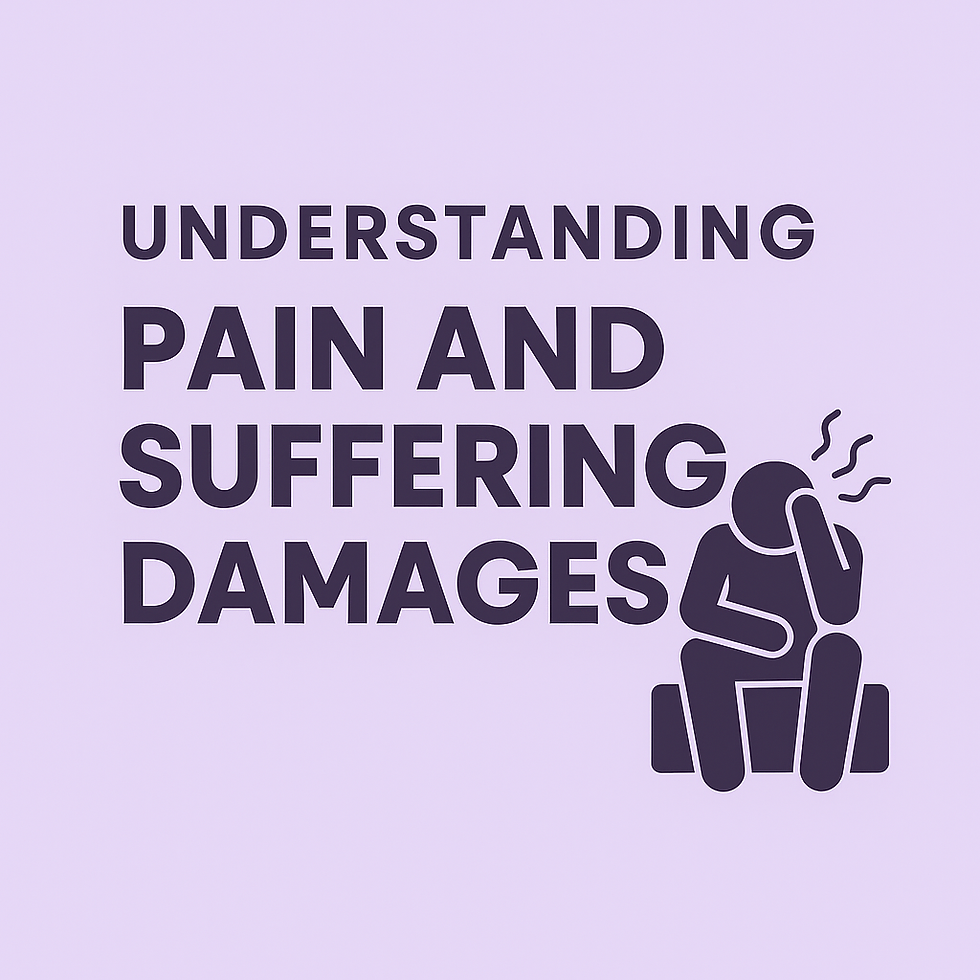Understanding “Pain and Suffering” Damages
- Dennis Sapien-Pangindian
- Jul 23
- 2 min read

What they mean, how they're calculated, and why they matter in personal injury cases.
What Are “Pain and Suffering” Damages?
“Pain and suffering” is a type of non-economic damages awarded in personal injury cases. Unlike economic damages (which cover tangible costs like medical bills), pain and suffering compensates you for how the injury has impacted your daily life, physical comfort, and emotional well-being.
This may include:
Physical pain from injuries
Ongoing discomfort or disability
Emotional distress or trauma
Anxiety, depression, or insomnia
Loss of enjoyment of life
Strain on relationships (loss of consortium)
These are real harms, even if they don’t come with a receipt or a price tag.
Examples of Pain and Suffering in Action
To make it concrete, consider two people with similar injuries from a car accident:
One person has a straightforward recovery in a few weeks.
The other needs multiple surgeries, struggles with PTSD, and can no longer play sports or pick up their child.
Even if their medical bills are similar, the second person’s life has been disrupted on a deeper level—and their pain and suffering damages will likely be higher.
How Are Pain and Suffering Damages Calculated?
There’s no fixed formula, but insurance companies and courts use a few common methods:
The Multiplier Method
A common approach is to multiply your economic damages (like medical bills) by a number that reflects the severity of your pain and suffering—typically between 1.5 and 5.
Example: $20,000 in medical bills × 3 = $60,000 in pain and suffering damages
The Per Diem Method
Another approach assigns a daily dollar amount to your pain (e.g., $150/day) and multiplies it by the number of days you’ve suffered and will reasonably continue to suffer.
Example: $150 × 180 days = $27,000 in pain and suffering damages
These are just tools—your actual amount will depend on the evidence, the jurisdiction, and how well your case is presented.
What Evidence Helps Prove Pain and Suffering?
Because it’s not easily measured, documentation is key. You can support your claim with:
Medical records describing your pain levels
Therapist or psychologist notes
Photos of your injuries
A pain journal documenting your day-to-day struggles
Testimony from loved ones about how the injury has changed your life
Proof of missed activities, hobbies, or events
The more vivid the picture, the better others can understand what you’ve gone through.
Are There Limits to Pain and Suffering Damages?
It depends on the state. Some states place caps on non-economic damages, especially in medical malpractice cases. Others do not.
Even in uncapped states, adjusters or juries may still be skeptical. That’s why working with a personal injury attorney who knows how to build and value these claims is so important.
Final Thoughts
Pain and suffering damages recognize that an injury affects more than just your wallet. They help restore a sense of justice when life is disrupted by someone else’s negligence.
If you're considering a personal injury claim, don't underestimate what you're going through—physically or emotionally. You deserve to be made whole in more than just financial terms.


Comments